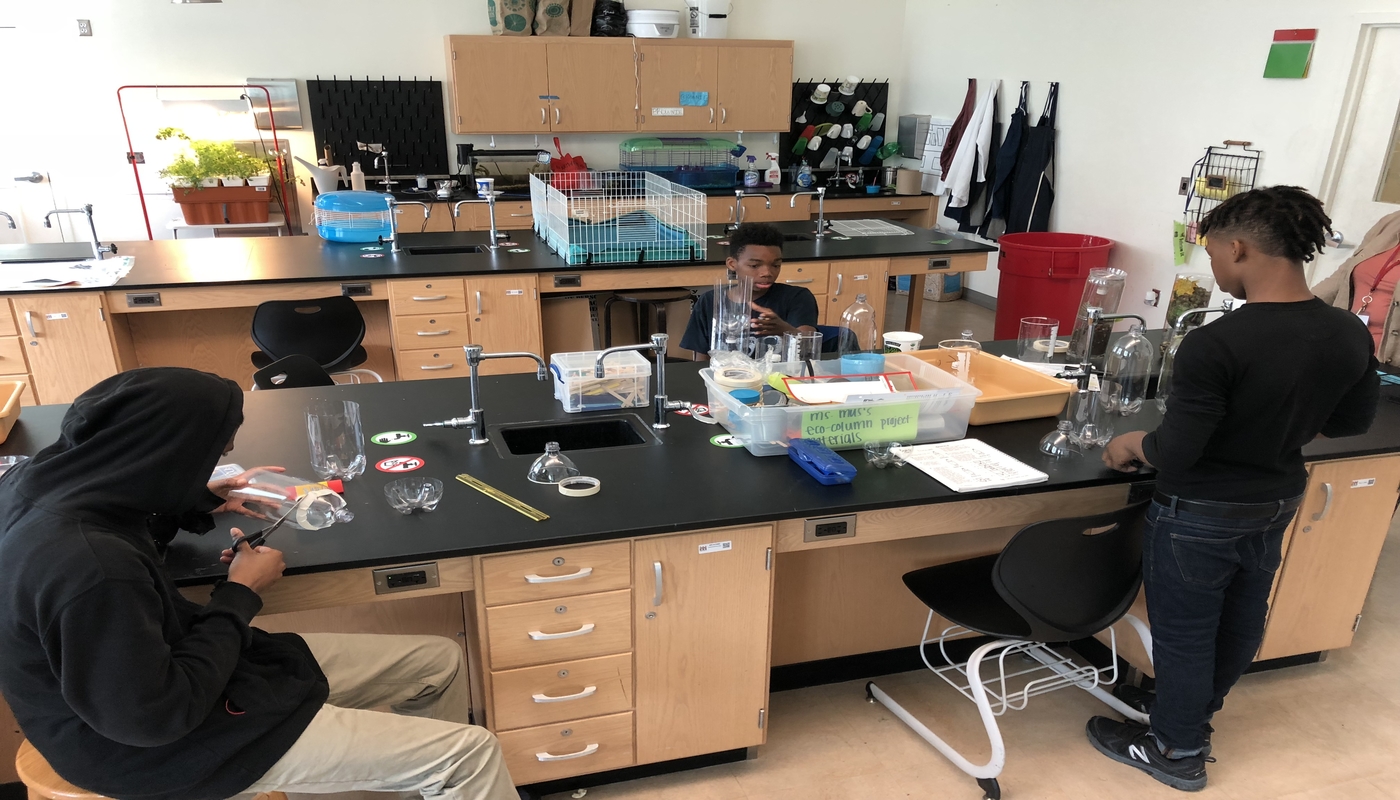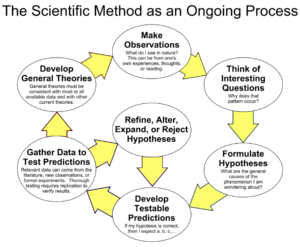
Throughout my childhood, I learned to love science and engineering. I was well-versed in the scientific method as a way to question the world around me and test my ideas.
However, the crux of my own science education as an older student was that often, scientific experiments were written out for me on worksheets from textbook pages that were copied in the teacher’s lounge.
We followed the procedures laid out for us step-by-step, and were graded on, essentially, participation. The cognitive lift was low and so was my interest level.
If I didn’t get the “right” conclusion to an experiment, I would simply erase and correct the data table as my teacher reviewed the answers on the overhead projector. What this way of “learning” taught me was that failing to follow directions was a bad thing, and problem-solving through research and investigation was something saved for the kids that would one day be genius scientists finding cures for diseases.
Experiences like this alienated me from science until I realized that the scientific method could be used across subjects and facets of life. I now teach biology and environmental science to students with emotional disturbances and learning disabilities at Anacostia High School and I want each of my students to understand how useful the scientific method can be both in and out of the classroom.
By applying Summit Learning teaching practices, I’ve used a classic classroom science experiment to make the scientific method understandable to all my students while putting them truly in charge of their own learning. No more workbook worksheets, no more lectures.
In a traditional ecocolumn experiment, we glue together 2-liter soda bottles and add organic matter to model a pond complete with a fish in the “Aquatic Chamber”, the forest floor (referred to as detritus) in the “Decomposition Chamber”, and a sunlight-abundant ecosystem at the very top referred to as the “Terrestrial Chamber”.
When built correctly, students can observe cycles of matter, a live food chain, and study how changes affect the biotic and abiotic components inside.
A Traditional Experiment that Missed the Point
Before using Summit Learning, my biology students in my special education classroom had experienced learning about ecosystems and biogeochemical cycles by building their own ecocolumns.
It was a fun project — students enjoyed observing the water cycle and drawing connections to the world around them. The students that kept their fish alive were proud of themselves and touted their ability to care for a pet. We bonded over mistakes made, and students that yearned for hands-on activities got more than their fix with the help of a caulking gun.
Still, at the end of our project, I realized in exasperation that my students may have only learned how to glue two-liter soda bottles together! Looking back, I am sure they learned something more than that, but I’m not sure if that something was translatable to their everyday lives.
And, those real-world connections and cross-curricular skill sets are what our students urgently need to succeed in life after high school.
A Project-Based Learning Approach
These same connections and skill sets are what led our academy to implement Summit Learning this school year. Determined to make sure my students with various disabilities learned important life skills while taking my classes, I approached the project very differently.
In the Summit Learning version of the ecocolumn project, the objective wasn’t just to build an ecocolumn. It also included writing a lab report on our experiment. The framework for the report completely changed my approach to the project.
From research question and hypothesis all the way to data analysis and conclusion, building an ecocolumn wasn’t just a DIY project, it was about mastering the scientific method process.
Supporting Learning Through Customization
While the ecocolumn project in the Summit Learning Platform is comprehensive, the project in Summit Learning was written specifically for Advanced Placement students, not students in a special education classroom. So I delved into differentiation to make the project accessible for all learners.
For context, the students in my classroom entered the school year demonstrating large gaps in Content Knowledge. Non-readers to grade-level readers learn alongside each other. Our students are more often than not dealing with difficult circumstances outside of the classroom. To add to this, students didn’t know where to begin when it came to forming a hypothesis independently!
I needed to level those challenges by providing additional supporting material.
For students who were missing Content Knowledge, I made laminated biogeochemical cycle “cheat sheets” for students to look at and draw on with whiteboard markers as they discussed potential research questions and hypotheses that they wanted to base their studies around.
As we moved on to subsequent parts of the project, students began to recall and apply processes within biogeochemical cycles to their work without additional support. The tool was successful in helping students access the content they need, while not becoming a crutch as they continued on in the work we were engaging in.
I also made models out of two-liter soda bottles to show how to build the ecocolumn as well as what went into each chamber. Students could touch, take apart, and look at these models so that they could more independently construct their miniature ecosystems. I knew this would be one of the more helpful tools, as my students have shown an overwhelming interest in hands-on activities. Plus, models are accessible to most students, regardless of ability!
“A picture says a thousand words”, but tangible exemplars are way more fun for students (and me, too)! Check out what #biology students are building and testing hypotheses in for 4th quarter: pic.twitter.com/TWk0IzfmEI
— Ms. Mus (@mollywmus) May 1, 2018
Finally, I found videos that related to students’ personal lives to make sure they understood concepts. We used these videos in partial-group workshops, which allow teachers to work closely with smallers sets of students to demonstrate mastery of specific Cognitive Skills in their projects.
Demonstrating Mastery of Cognitive Skills through Workshops and Examples
Workshops were my final tool in solidifying student understanding of the scientific method. In my workshops, students are introduced to a skill, practice the skill with me, demonstrate the ability to produce work employing this skill, and then grade themselves or each other on said skill after independently producing their own work.
This follows the gradual release of responsibility instructional framework — a way of teaching that is effective and puts the responsibility of independent, higher-order thinking on students.
For the ecocolumn project, I hosted small-group workshops on the following skills:
- Asking Questions (forming a research question)
- Hypothesizing
- Procedures
- Introductions
- Modeling
- Interpreting data
- Conclusions
For students who are frequently absent or those that want to move quickly through the project without workshops, they can demonstrate mastery by using a project exemplar on the board in order to see what I am looking for in their final products and move right into their work independently. Students even look at incorrect work with a Cognitive Skills Rubric so that they understand how I am grading their work, and what mastery looks like.

Building a Scientific Method Mindset
The ecocolumn project allows students to feel confident in their ability to create a question and test it. Because of this, I have been able to talk to them about what science really is.
We talk about science as being a way to solve problems in the real world, like learning how to do laundry without turning your socks pink, or how to keep a job after making a mistake. We talk about how data doesn’t support initial hypotheses, just like we won’t always get the outcome we anticipate in a personal relationship.
These conversations result in more meaningful questions from students about their own observations from outside our classroom walls.
Because the scientific method is cyclical, just like life, students are learning how to problem solve for the rest of their lives. That is what science is all about, and it is an empowering experience for students.
Interested in learning more about how Summit Learning encourages a passion for science in students? Learn more about how Aspen Valley Preparatory Charter School grew student confidence in through science projects and how its 6th grade students used their skills to reduce their human footprint.

